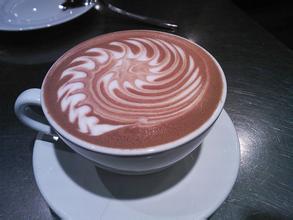Introduction to the varieties and flavors of Nicaraguan Coffee Manor with smooth taste
In many countries coffee production is severely affected for political reasons. The coffee industry in Nicaragua is no exception. The revolution of 1979 forced coffee growers to flee to Miami. A period of uncertainty ensued as the government considered whether to reallocate land, including many plantations, resulting in a shortage of coffee supplies and a decline in production, from more than 1 million bags in the early 1970s to less than 600,000 bags in 1990. Now the government has liberalized the coffee industry and private owners have taken control of the market. The best coffees are produced in Sinotka, Matagalpa, and Nueva Segovia. They are pleasant with moderate acidity and aromatic taste.
Nicaragua is now one of the poorest countries in Central America. Because of its poor economic base, the coffee industry is still in a relatively backward state, while coffee farmers are in an extremely poor state. Fortunately, Nicaragua's coffee has received some foreign aid funds to improve the quality of its coffee. Nicaragua's Madagelba, Chinodega, Segovia region of coffee produced by coffee lovers respected the world. Nicaragua is located in Central America, bordered by the Pacific Ocean to the west and the Caribbean Sea to the east. North central highlands, coastal plains to the east, is part of the Central American volcanic belt. The eastern plain is hot and rainy, and has a tropical marine climate. Suitable climate provides a good growing environment for coffee cultivation.
High quality Nicaragua coffee, grown in the north and centre of the country. Coffee is Nicaragua's pillar industry, producing nearly a hundred thousand tons of coffee beans every year. Many people who have tasted Nicaragua coffee usually think that it is no different from Salvadoran coffee or Honduran coffee. It has a rich, soft, delicate aroma with a slightly bitter finish, like a subtle wine flavor. Nicaragua has a deep flavor, chocolate, caramel sweetness, almond flavor, bright acidity, and different from the bright acidity of Central America. Nicaragua's coffee planting ecology has a unique environment, fertile volcanic soil, plus shade planting methods, established a good growth physique, so that Nicaragua beans not only have rich alcohol and fragrance taste, in the eyes of international coffee experts as top grade, gradually received the attention of the boutique community. Nicaragua is located in central Central America, both near the Pacific Ocean and the Caribbean Sea. It has a beautiful tropical feel. Although it is one of the poorest countries in Central America, it produces coffee that is loved by coffee lovers.
The development of coffee industry in Nicaragua is not easy. Due to the influence of civil war, coffee production has dropped sharply for a time, but it has shown an upward trend in recent years. Although coffee farmers are already living in poverty and the poor economic base makes the coffee industry in a relatively backward state, coffee produced in Madagalba, Chinodega and Segovia is still highly respected by coffee lovers all over the world (especially coffee produced in Madagalba is said to be very similar to Kenya AA). Good coffee is appreciated regardless of origin.
Good acidity, moderate alcohol
Nicaragua coffee belongs to Central and South American style coffee, although the acidity is not very high, but feel fresh. The alcohol level was also not high, but the overall feeling was just right, neither weak nor too thick. Make it easier to accept. In the light sour taste can also vaguely feel the taste of red wine, which is also a major feature of Nicaragua coffee bar. It's not as obvious as Kenyan coffee, but what's the harm in having a nice, gentle feeling?

Important Notice :
前街咖啡 FrontStreet Coffee has moved to new addredd:
FrontStreet Coffee Address: 315,Donghua East Road,GuangZhou
Tel:020 38364473
- Prev

Introduction to the characteristics and Flavor of the full-grained El Salvador Coffee Manor
Coffee from El Salvador is a specialty of Central America, where it is light, fragrant, pure and slightly sour. Like Guatemala and Costa Rica, coffee in El Salvador is graded according to altitude, and the higher the altitude, the better the coffee. The best brand is Pipil, which is what the Azbec-Aztec Mayan called coffee, which has been acquired.
- Next

Introduction to the flavor and taste of Brazilian coffee manor with low sour taste
Brazilian coffee generally refers to coffee produced in Brazil. There are many kinds of Brazilian coffee, and like other Arabica coffee, Brazilian coffee is called Brazils to distinguish it from Milds coffee. The vast majority of Brazilian coffee is unwashed and sun-dried and is classified according to the name of the state of origin and port of transport. Brazil has 27 states and 17 states produce coffee, but four of them produce the most coffee.
Related
- Detailed explanation of Jadeite planting Land in Panamanian Jadeite Manor introduction to the grading system of Jadeite competitive bidding, Red bid, Green bid and Rose Summer
- Story of Coffee planting in Brenka region of Costa Rica Stonehenge Manor anaerobic heavy honey treatment of flavor mouth
- What's on the barrel of Blue Mountain Coffee beans?
- Can American coffee also pull flowers? How to use hot American style to pull out a good-looking pattern?
- Can you make a cold extract with coffee beans? What is the right proportion for cold-extracted coffee formula?
- Indonesian PWN Gold Mandrine Coffee Origin Features Flavor How to Chong? Mandolin coffee is American.
- A brief introduction to the flavor characteristics of Brazilian yellow bourbon coffee beans
- What is the effect of different water quality on the flavor of cold-extracted coffee? What kind of water is best for brewing coffee?
- Why do you think of Rose Summer whenever you mention Panamanian coffee?
- Introduction to the characteristics of authentic blue mountain coffee bean producing areas? What is the CIB Coffee Authority in Jamaica?

